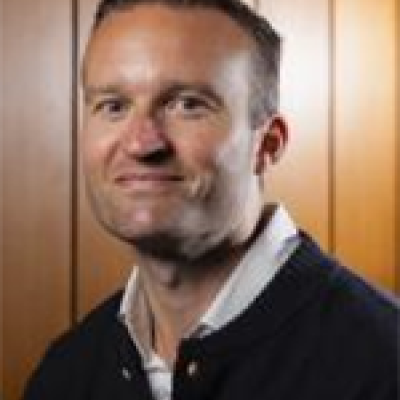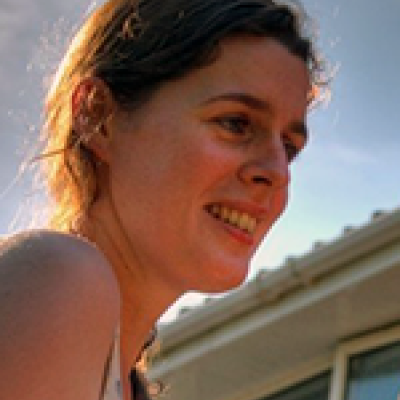The School of Geography and the Environment, in association with the Research Laboratory for Archaeology and the History of Art, houses a state of the art luminescence dating facility: the Oxford Luminescence Dating Laboratory (OLD).
Optically Stimulated Luminescence (OSL) dating has emerged within the last 20 years as a key Quaternary absolute dating tool, with a wide range of terrestrial and marine applications. Optical dating techniques employ ubiquitous quartz or feldspar grains to directly date the deposition of sedimentary units. As such, the optical dating methods allow the systematic chronological evaluation of Quaternary-age sedimentary sequences.
Within the School of Geography and the Environment, the OLD Laboratory provides support particularly for the Landscape Dynamics research cluster, with a specific focus on low latitude environment and climate change, geoarchaeology and geomorphology. In addition our researchers continuously engage in efforts to improve and develop the methodology and to further advance our knowledge on the fundamental physical mechanisms underlying the dating method.
Commercial Services
The OLD laboratory offers a commercial dating service for quartz and feldspar samples, which can be dated at single grain or multi-grain scales. For queries regarding costs and processing times, please contact Dr Julie Durcan
Luminescence Dating Overview and Facilities
What is luminescence dating?
Luminescence dating is an absolute radiometric method of determining the age of a material since a key event in its history - typically burial (in the case of sediments) or firing (in the case of ceramics or burnt stone).
When a geological sediment is buried, the effects of the incoming solar radiation are removed. With this bleaching effect removed, the influence, albeit often weak, of naturally-occurring radioactive elements (primarily potassium-40, uranium and thorium) within the sediment together with incoming cosmic rays results in the accumulation of a signal within individual mineral grains (most commonly quartz and feldspars). It is this signal that is the key to luminescence dating techniques. Given an estimate of the rate of received ionizing radiation (the dose rate, or D), and knowing the total accumulated dose (the palaeodose; designated DE) it is possible to derive an age since burial. This is obtained from the formula:
| Age (a) = | Palaeodose, DE (Gy) |
| Dose rate, D (Gya-1) |
This accumulated signal results in luminescence (i.e. the emission of a characteristic colour of light) when stimulated. Stimulation can be achieved by heating (thermoluminescence or TL) or exposure to light (optically-stimulated luminescence or OSL).
Luminescence dating has been applied (depending on conditions) from sediments ranging from 10 - 106, although more commonly the upper limit is 100-200 ka. It has been applied to aeolian, fluvial, lacustrine, glaciogenic, coastal and marine applications, in addition to a wide range of research in archaeology and art antiquity.
Luminescence dating of arid sediments
We use a range of sampling techniques in the field. Where possible, sediment exposures with visible stratigraphy are used or created. In addition or where exposures are not present, sampling can be carried out using an auger to drill through deep sedimentary sections. A hydraulic drive with a range of different heads can be used in conjunction with hand auguring to punch through calcrete or silcrete layers within the landform of interest. Using this technique, sampling intervals of 0.5m are readily achieved to depths of up to 10-20m allowing detailed chronologies of sediment accumulation to be obtained. Samples are taken in light-tight sampling pots to prevent any exposure to light. Dose rates are measured in the field using in-situ gamma spectrometry and independently through measuring the concentrations of the radioisotopes U, Th and K using ICP-AES and ICP-MS.
Luminescence sampling procedures in the field
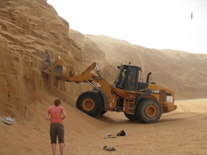 |
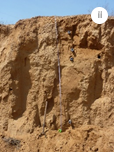 |
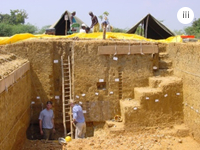 |
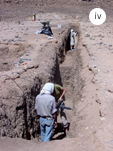 |
|
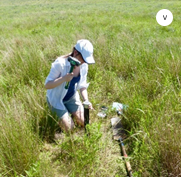 |
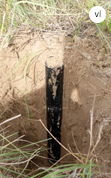 |
 |
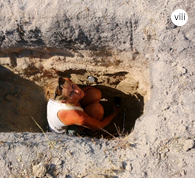 |
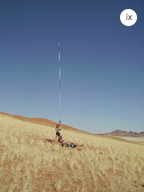 |
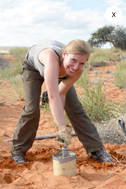 |
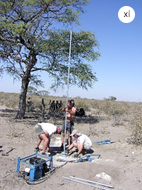 |
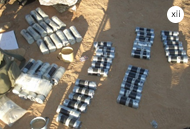 |
 |
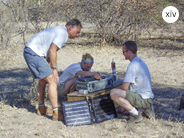 |
Sampling for OSL dating in i-ii) exposed dune sections in the UAE and Pakistan, iii-iv) archaeological sites in India and Sudan, v-vi) using short cores in the Nebraska sandhills, vii-viii) hand dug pits in Kalahari dunes and lake basins; ix-xi) using hand and hydraulic augers in Nambia and Botswana; xii) samples in light-tight packaging before shipping back from field sites and xiii-xiv) using the gamma spectrometer to record dose rates within the sediment matrix.
Facilities
The Oxford Luminescence Dating Laboratory is based within the School of Geography and the Environment at the University of Oxford. The laboratory houses a total of 4 Riso TL-DA-series TL/OSL readers including a single-grain reader, and is supported by specialised laboratory facilities for processing samples under the specific wavelength lighting required for luminescence dating.
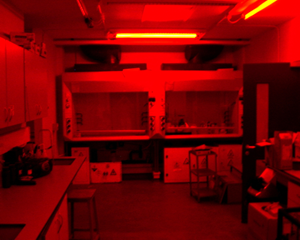
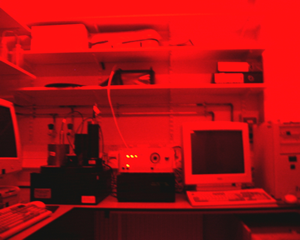
Current Research
Current research projects undertaken by researchers in the Oxford Luminescence Dating Laboratory include:
- Megalake records of Kalahari climate change: testing the asymmetry of African Humid Periods
- Floods, droughts and human occupation of the upper Zambezi Valley, Zambia
- Landscape archaeology of the Kalahari: How did major hydrological shifts affect Stone Age environmental use in the late Quaternary?
- Dating the Desert: Dune dynamics in central southern Africa
- Sand ramps as palaeoenvironmental archives: a southern African perspective
- Determining dryland landscape sensitivity to natural and human disturbances using OSL techniques, Nebraska Sandhills
- Reconstructing late Quaternary palaeo-environments in the Indian sub-continent
- Quaternary of the Thar Desert in India: understanding the history of dune accumulation
- Quantifying fluvial-aeolian process interactions in Central Australia
- Understanding changing Holocene fluvial activity and Bronze Age archaeological change in Kazakhstan
- Age and provenance of Central European loess
- Modelling fundamental processes associated with the production of luminescence signals in quartz
- Statistical modelling of absorbed dose distributions and implications for the accuracy of age determinations
- Developing the dose rate and age calculator (DRAC)
- Optimising the luminescence signal from quartz for dating applications
Contact Us
- Prof Richard Bailey (OLD Lab Co-Director)
- Dr Julie Durcan (Luminescence Dating Laboratory Co-ordinator)
Oxford Luminescence Dating Laboratory
School of Geography and the Environment
University of Oxford
OUCE / Dyson Perrins Building
South Parks Road
Oxford, OX1 3QY
Tel: +44 (0)1865 285085


